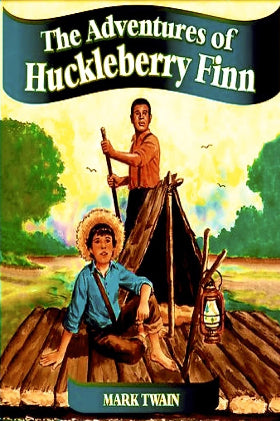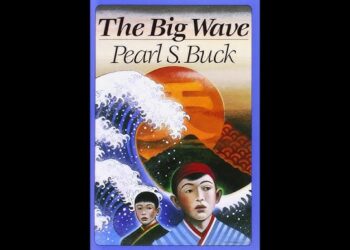Introduction
The Adventures Of Huckleberry Finn Summary By Mark Twain Mark Twain’s The Adventures of Huckleberry Finn (1884) is a cornerstone of American literature and an enduring classic. Set along the Mississippi River in the pre-Civil War South, the novel is a sequel to The Adventures of Tom Sawyer and follows the journey of Huckleberry Finn, a young boy escaping his troubled life, and Jim, a runaway slave seeking freedom.The Adventures Of Huckleberry Finn Summary By Mark Twain
Often hailed for its vivid depiction of Southern society and its biting critique of racism and moral hypocrisy, the novel uses humor, satire, and Twain’s keen observational skills to deliver a narrative that is both entertaining and thought-provoking. Its use of regional dialects, rich character development, and exploration of themes like freedom, friendship, and the conflict between societal norms and personal conscience have made it a subject of admiration as well as controversy.
Summary of The Adventures of Huckleberry Finn
Setting and Context
The novel is set in the American South during the mid-19th century, along the banks of the Mississippi River. Twain captures the societal attitudes and complexities of the time, particularly regarding slavery and class distinctions.The Adventures Of Huckleberry Finn Summary By Mark Twain
Read more
Plot Summary
1. Huck’s Troubled Home Life
Huckleberry Finn, a young boy who has previously gained fame from his adventures with Tom Sawyer, lives with Widow Douglas and Miss Watson, who aim to “civilize” him. Huck’s abusive father, Pap, reappears, demanding custody of Huck and his money. Huck escapes his father by faking his own death and fleeing to Jackson’s Island.The Adventures Of Huckleberry Finn Summary By Mark Twain
2. Meeting Jim and Forming a Bond
On the island, Huck encounters Jim, Miss Watson’s runaway slave. Initially hesitant, Huck decides to help Jim escape to freedom. Together, they embark on a journey down the Mississippi River on a raft, seeking safety and a new life.The Adventures Of Huckleberry Finn Summary By Mark Twain
3. Adventures and Encounters Along the River
Their journey is filled with encounters that test their resolve and deepen their bond. They face conmen like the Duke and the King, whose schemes cause trouble and highlight the greed and dishonesty prevalent in society. Huck and Jim’s adventures range from humorous to perilous, showcasing Twain’s mastery of storytelling.The Adventures Of Huckleberry Finn Summary By Mark Twain
4. Huck’s Moral Dilemma
As Huck grapples with societal teachings about slavery, he begins to question the morality of aiding Jim. His internal struggle culminates in a pivotal moment where he decides to reject societal norms and follow his conscience, declaring, “All right, then, I’ll go to hell,” as he resolves to help Jim gain freedom.The Adventures Of Huckleberry Finn Summary By Mark Twain
5. Rescue and Resolution
The final section of the novel takes Huck and Jim to the Phelps plantation, where Jim is captured. Tom Sawyer reenters the story, concocting an elaborate and unnecessary plan to free Jim, which ultimately results in chaos. It is revealed that Miss Watson had freed Jim in her will, rendering their efforts moot.
Huck rejects the idea of returning to a “civilized” life, choosing instead to head west, embodying the spirit of freedom and individualism.The Adventures Of Huckleberry Finn Summary By Mark Twain
Themes in The Adventures of Huckleberry Finn
1. Racism and Slavery
Twain critiques the institution of slavery and the racial prejudices of the time through Huck and Jim’s relationship. Jim’s humanity and dignity contrast sharply with the dehumanizing stereotypes perpetuated by society.The Adventures Of Huckleberry Finn Summary By Mark Twain
Read more
2. Freedom and Independence
The novel explores the idea of freedom—Jim’s quest for literal freedom from slavery and Huck’s desire for freedom from societal constraints. The Mississippi River serves as a symbol of liberation and escape.
3. Moral Growth and Conscience
Huck’s journey is as much about his moral development as it is about physical adventure. His decisions reflect his growth in understanding right from wrong, independent of societal norms.
4. Hypocrisy and Corruption of Society
Through characters like the Duke and the King, as well as the actions of townspeople, Twain exposes the greed, cruelty, and hypocrisy inherent in society. The novel questions the morality of a society that upholds slavery and punishes individuality.The Adventures Of Huckleberry Finn Summary By Mark Twain
5. Friendship and Loyalty
The bond between Huck and Jim is central to the narrative. Their friendship transcends societal barriers and becomes a testament to mutual respect and loyalty.
6. Identity and Self-Discovery
Huck’s journey is also one of self-discovery. By rejecting societal expectations and embracing his own moral compass, Huck learns to define his identity on his own terms.The Adventures Of Huckleberry Finn Summary By Mark Twain

Conclusion
The Adventures of Huckleberry Finn by Mark Twain is a powerful exploration of freedom, morality, and societal hypocrisy. Through Huck and Jim’s journey, Twain challenges readers to question the values of their society and to embrace the complexities of human relationships.The Adventures Of Huckleberry Finn Summary By Mark Twain
The novel’s enduring relevance lies in its ability to provoke thought and discussion, making it a vital part of literary canon. With its vivid characters, sharp wit, and profound themes, The Adventures of Huckleberry Finn remains a timeless masterpiece.The Adventures Of Huckleberry Finn Summary By Mark Twain
Read more
(FAQ)
1. Why is The Adventures of Huckleberry Finn considered a classic?
The novel is considered a classic for its groundbreaking narrative style, rich character development, and unflinching critique of societal issues. Twain’s use of regional dialects and his portrayal of the South make it a seminal work in American literature.
2. What is the significance of the Mississippi River in the novel?
The Mississippi River symbolizes freedom and possibility. For Huck and Jim, it represents an escape from oppression and a path to a new life, free from societal constraints.
3. How does Huck’s character evolve throughout the novel?
Huck evolves from a carefree, naive boy into a thoughtful, morally conscious individual. His journey with Jim challenges his beliefs and leads him to reject societal norms in favor of his own sense of right and wrong.
4. Why has the novel been controversial?
The novel’s depiction of race and its use of racial slurs have sparked debates about its place in education and literature. While some view it as a critique of racism, others argue that its language and portrayal of Black characters can be offensive.
5. What role does Jim play in the story?
Jim is both a mentor and a friend to Huck. His character challenges stereotypes and serves as a moral anchor, demonstrating courage, wisdom, and compassion.
6. How does Twain use satire in the novel?
Twain employs satire to critique societal norms, religious hypocrisy, and the institution of slavery. His humor and irony expose the absurdities of the world Huck inhabits.
7. Is The Adventures of Huckleberry Finn a sequel to The Adventures of Tom Sawyer?
Yes, the novel serves as a sequel but can be read independently. While Tom Sawyer focuses on childhood adventures, Huckleberry Finn delves into more mature themes and moral questions.
8. What is the importance of Huck’s decision to help Jim?
Huck’s decision to help Jim, despite believing it to be morally wrong according to societal standards, marks a significant moment of personal growth. It reflects his rejection of societal norms in favor of his own moral convictions.
Read more

















